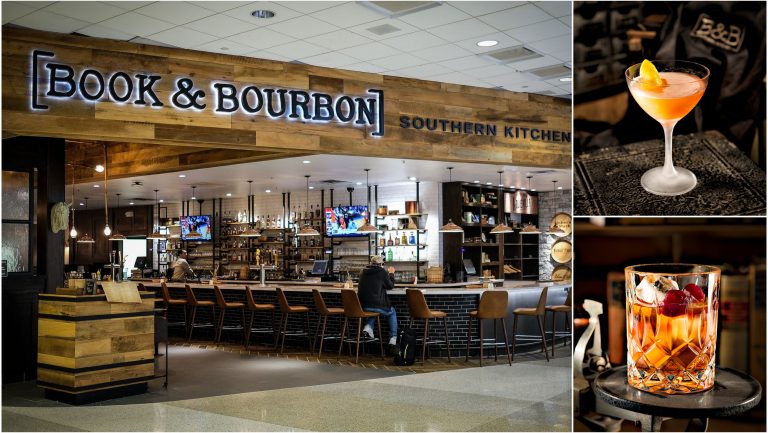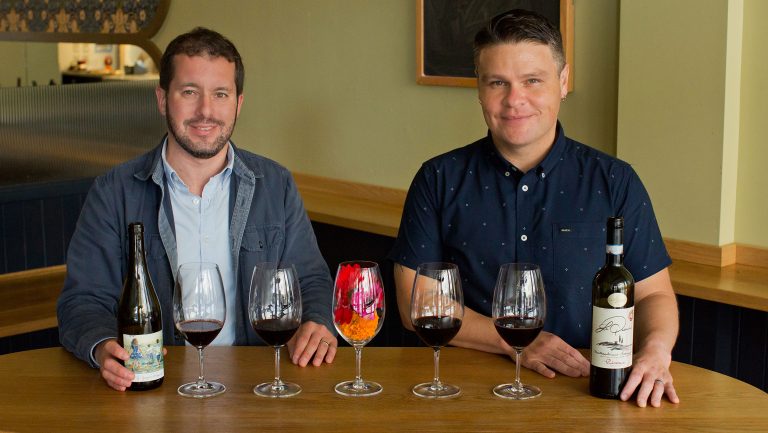Airport concourses are starting to resemble big-city streets, and it’s not just because they’re crowded and chaotic. Over the past several years, there’s been a shift away from generic, cookie-cutter dining and drinking options and toward upmarket brands that reflect the evolving tastes of increasingly beverage-savvy consumers. In short, the notions of “craft” and “premiumization” have arrived at the terminal.
And while the logistical procedures involved in supplying most streetside watering holes are fairly complicated, stocking an airport with expanded offerings introduces entirely new challenges. Distributors often bemoan the tight delivery windows they face at retail, but such complaints seem quaint when 21st-century air travel security protocols are part of the everyday routine. In this environment, security checkpoints, package X-rays, vehicle bomb sweeps, and personnel background checks are all par for the course.
Airport Operators Trade Up
When Carson Gray joined one of the country’s largest airport food service companies three years ago, the transformation had already begun, “The craft beer and spirits thing had been happening for a while, and it was really about … bringing it to life,” says Gray, director of adult beverage and restaurant development at HMSHost, a unit of Italy’s Autogrill S.p.A.

Don’t miss the latest drinks industry news and insights. Sign up for our award-winning newsletters and get insider intel, resources, and trends delivered to your inbox every week.
Among those is one of HMSHost’s newest venues, IBU—it stands for International Beer Union, but the fact that it has the same initials as International Bittering Units is no accident. When it opens at McCarran International Airport in Las Vegas on a date yet to be determined, IBU will be dedicated to craft beer but will have a craft spirits program as well.
For the more spirits-centric set, HMSHost recently opened Book and Bourbon Southern Kitchen, which, as its name makes clear, is pretty serious about whiskey. The property is right at home at the Louisville International Airport, in the heart of Bourbon country—the epicenter of the worldwide whiskey revival. Says Gray, “The travelers had really dictated this for us, really pushed us and led the charge to bring these craft products to our locations—so much so that we created our proprietary in-house brands that revolve around a lot of those craft products.”
HMSHost operates in 84 airports across North America. In addition to McCarran, its other major hubs include Chicago O’Hare, Los Angeles International, Charlotte Douglas International, in North Carolina, and Houston’s Bush International. It also manages venues at all of Canada’s major airports except Saskatoon.
In addition to its homegrown venues, like IBU and Book and Bourbon, HMS also manages properties that license established brands, particular those local to their host airports. At LAX, the company runs Point the Way Café, named after the flagship IPA produced by L.A.’s Golden Road Brewing Co., a subsidiary of Anheuser-Busch InBev. At Baltimore Washington International (BWI), HMS will soon open a taproom linked to the Flying Dog Brewery in Frederick, Maryland.
HMSHost is hardly the only food service company tasked with revamping the airport experience. New York–based OTG has also made a name for itself in airports, particularly with its dramatic makeover of Newark Liberty International Airport’s busy Terminal C, the main hub for United Airlines. Part of the effort, begun in in the summer of 2014, involved replacing some moving walkways with bars and restaurants that are accessible from 360 degrees in the center of the concourse. Two of them, Proof and Caps Beer Garden, boast extensive whiskey and beer selections, respectively, offering a level of choice rarely found beyond big-city streetside establishments.
Another OTG concept at Newark, Tacquila has a similar footprint to that of the whiskey and beer bars, except with a focus on Mexican street food and a tequila list that has, at times, featured as many as 350 selections.
These venues also showcase one of OTG’s signature attractions: iPad ordering terminals at every barstool and table. OTG has deployed more than 5,500 tablets at its 55-plus establishments throughout Newark Liberty International Airport.
Terminal-Sized Operating Challenges
Running a bar or eatery in an airport presents challenges that go far beyond scale. Procedures for staffing, training, and scheduling are all affected by the venue and its restrictions.
Receiving shipments—even after vehicle bomb sweeps and package X-rays—is one of the easier problems to solve. “The majority of our distributors’ drivers are [issued] badges by the TSA before they can come into the facility,” says HMSHost’s Gray. HMSHost operates subterranean distribution centers at its major hubs.
At smaller airports, HMS houses beer, wine, and spirits in more modest storage facilities, within locker rooms. Operators can store excess product in there and access it when they need it. Some restaurants and bars at the smaller locations often function like streetside mom-and-pop outlets, with walk-in coolers on the premises.
At Newark, deliveries go to a central OTG warehouse located beneath Terminal C. “It’s enormous,” says bar management veteran Rene Hidalgo, whom OTG retained as a beverage specialist for the new launches. “It’s almost like running a small town.” One individual handles purchasing for the entire terminal; general managers representing pods of two to three restaurants buy from the OTG warehouse for their own venues.
Staffing is considerably trickier in an airport than for streetside establishments. Employees must obtain security badges, a process that can sometimes be fairly protracted. Hidalgo recalls that his own clearance took about eight weeks, during which time he needed a security escort to move about the terminal.
Even with a badge, daily security hiccups can delay a food and beverage server’s arrival at work. A particularly busy flying period—summer, holiday weekends, and Thanksgiving—can create as much of a bottleneck for staff as it can for travelers. “There are a lot of different things that you’ve got to get used to,” Hidalgo says. “Scheduling is something you really pay attention to.”
And then there’s the cutlery. All of the knives used in the kitchen and at the bar are, for obvious reasons, tethered to the wall. That becomes a concern at peak times, when, say, a bartender or bar-back needs to slice fruit for juicing or garnishing and seeks an out-of-the-way space for the task. “You have the flexibility in a [streetside] restaurant to move the prep wherever you want, but you can’t really do that here,” Hidalgo points out. “You really have to plan in advance and walk through every detail and every aspect of the space. There’s a learning curve to it.”
Raising the Bar on Staff Training
Airport-specific security and operational protocols are only the beginning of the staff-training regimen. Increasingly beverage-savvy consumers demand that those who serve them drinks know about what’s going in the glass.
When HMSHost opened Louisville’s Book and Bourbon, it sent the service team to Maker’s Mark’s and Knob Creek’s distilleries for a grain-to-glass whiskey education. It also sent employees of the Flying Dog Tap House, at BWI, to the Maryland brewery to learn about beer. “We believe knowledge is power,” Gray says, “and we really want to instill confidence in our team.”
While some may assume that airport clientele are a transient sort and don’t necessarily command five-star customer service, that’s often not the case. In fact, repeat business on the concourse is a lot more common than one might expect. “That’s something that I’d thought about a lot—how do you run a bar with no regulars?” says Hidalgo. “Figuring out how to staff your bar with people who could adapt to that was an interesting challenge. But as it turned out, they do have regulars.”
That’s especially true at major metro-area hubs like Newark. “You’d see people who sit down at the bar and high-five the bartender, and the bartender will say something like, ‘Hey, Mike, here’s the beer you like,’” Hidalgo says. “[I realized] wow, this person flies out of this airport two or three times a week. I have places near my office where I go two or three times a week, so in that sense an airport is very much like a small town.”
On the other hand, patron behavior tends to depend on the situation. Gray argues that the ordering habits of a frequent business traveler differ from those of a leisure traveler.
At major business hubs like Chicago O’Hare and Charlotte Douglas, folks are known to stay within their comfort zones. “It really varies from airport to airport,” Gray says. “Some [airports] are not people’s final destinations—they’re more layovers, with people just passing through. Maybe they’re on their way to a meeting and not drinking that day, and if they are, they’re going to want to keep it simple.” Those travelers probably won’t be the target consumers for fancy mixology or overly experimental beers. They’ll usually stick with the brands they know.
Conversely, at airports that experience heavy vacation traffic, travelers are generally more adventurous in their beverage choices. “In places like Fort Lauderdale, Vegas, LAX—vacation airports—guests are getting more involved in the experience, and they’re willing to try new things,” Gray notes. While time spent in the winged metal tubes seems to get more dismal by the day, at least fliers have a silver lining—in airport bar upgrades that deliver the products and experiences they’ve learned to relish.

Dispatch
Sign up for our award-winning newsletter
Don’t miss the latest drinks industry news and insights—delivered to your inbox every week.
Jeff Cioletti is a former editor in chief of Beverage World magazine and the author of the books The Drinkable Globe, The Year of Drinking Adventurously, Beer FAQ, and the upcoming Sakepedia. He’s a Certified International Kikisake-shi (sake sommelier).







